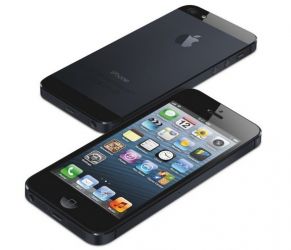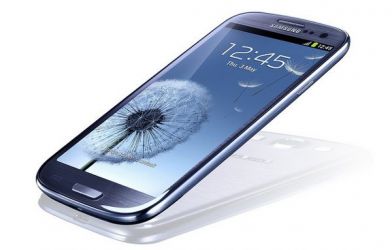Update: I just talked to DisplayMate's Raymond Soneira, and he says that the power-consumption test was done on an all-white screen. This is the worst-case scenario for an OLED, and so real-world results will be better (depending on your typical phone usage of course).
DisplayMate posted an interesting and comprehensive comparison between the iphone 5 IPS-LCD and the Super AMOLED HD display used in the Galaxy S3. They say that the iPhone's display is superior - its a very accurate display, and it's the best Smartphone display they have ever seen. It's actually quite an improvement over the display used in the iPhone 4S.
 |  |
DisplayMate says that the OLED display on the S3 is not as bright as the LCD, it is less readable in high ambient lighting, it has saturated green and distorted and exaggerated colors. They still complain about Samsung not calibrating the color gamut. On the other hand, they say that OLED is a new technology and hasn't been refined to the same degree as LCDs yet. They still say OLEDs have a very promising future.
DisplayMate has some suggestions for Samsung. first of all, they need to keep improving OLED displays. They suggest using a smaller display size which will use less power, and add a bigger battery - which will both enable to increase the screen's brightness. Another option is to improve the power efficiency of the OLED itself - for example by starting to use a green phosphorescent emitter. And of course Samsung should start calibrating the display and have accurate colors.
Back in July DisplayMate posted a Galaxy range shootout, comparing the Galaxy S, SII and SIII phones, with the conclusion that OLEDs has been enjoying a rapid performance improvements. Also in the July, DisplayMate's Raymond Soneira saw the OLED TVs at SID 2012 and said that LG's OLED TV is the most impressive TV he's ever seen.
Comments
Oh yeah? How about blacks? After first OLED display in my phone I cant't stand LCD black
DisplayMate performed in-depth testing with both displays and I didn't see anything wrong with their numbers. However, interepreting those numbers are fairly subjective. Here are some items that stand out for me:
1) Color gamut -- claiming that larger color gamut is actually a negative is just plain ridiculous. For example, sRGB is a smaller gamut than NTSC, are we to say that all the TVs that feature NTSC color gamut are infereior because the color gamut is larger than sRGB?
2) It's true that the OLED screen has lower luminance. Brightness on the other hand, is perceived luminance, which has a lot to do with contrast and the level of blacks. It is actually to OLED's advantage that it offers the same level of brightness at lower luminance.
3) The author of this report failed to mention the benefits offered by the larger screen size and pixel count of the OLED display, which to many users outweighs all other considerations.
I also find the DisplayMate reviews to be rather, shall we say, bizarre. The idea that a large color gamut is a bad thing is frankly ridiculous. The whole section on luminance also makes little sense. Finally, I do not understand the value of such a review. Whether a screen is "better" or not is ultimately determined by user preference. Just ask 1000 people which they think is better - simple as that.
They don't have problem with larger gamut. The problem is in lack of any support for color profiles or proper calibaration, so any content you have displays way oversaturated. You can adjust color saturation on your TV, but I doubt you put it on max and watch everything distorted (i.e. human skin tones looking completely unnatural)
As for the brightness, if you go outside and look at the display under sunlight, it is the luminance that matters. It doesn't matter that blacks are perfect if the luminance is too weak.
IMO the 'problem' with the DisplayMate reviews is that from the way they are conductued, they are probably more useful for the professional display user (e.g. designers, graphics guys, etc...) than the average customer. But since the average user is exactly who the mobile phone companies are aiming at the review is of limited use unless you know exactly what you are looking for.
For instance the ability to use diferent color profiles is of no interest at all to me on my mobile phone. However display brightness is a big issue because I use it outdoors a lot. But this varies from user to user so....
They are likely working for them in one or the other way. Just an assumption :)
since the most films and photos are made within the sRGB standard, there is really no need to say that a gamut larger than sRGB is definitly better. Unless Samsung gets the color managment that Sony's Monitor is now using, i wont take the larger gamut for a real thing.


This should hardly be a surprise to anyone who read the display mate article about the S3. In order to save battery life despite the larger display, Samsung is pulling all kinds of tricks to make the S3 work with lower brightness and less user access to the display settings.
With the more traditional LCD technology and the smaller display of the iPhone 5 Apple doesn't have to care as much about battery life and consequently the display performance beats that of the S3.